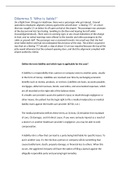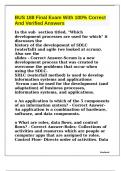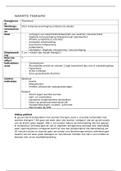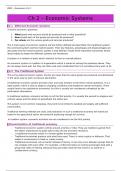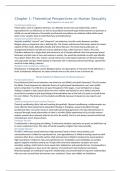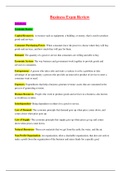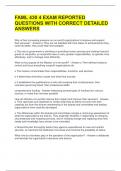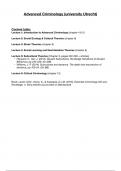Dilemma 5 ‘Who is liable?’
On a flight from Chicago to Heathrow, there was a passenger who got injured. Ground
operations employees aligned a jetway against the aircraft door - a Boeing 777 - at a level
that was roughly 15 cm below its sill upon arrival at the airport. The passenger was unaware
of the descent and lost her footing, tumbling to the floor and injuring her left ankle
musculoligamentously. There were no warning signs or any visual indications of the change
in level, and no verbal warnings were offered to the traveler and other passengers by the
cabin or ground staff. The passenger was a seasoned traveler. Her proof was that she had
never fallen before and had not anticipated the presence of the step. The airline's argument
was that on a Boeing 777 aircraft, a step of about 15 cm was required because the top of the
jetty would otherwise foul the outward-opening door, and that the alignment complied with
airport authority criteria.
Define the term liability and which type is applicable for the case?
A liability is a responsibility that a person or company owes to another party, usually
in the form of money. Liabilities are resolved over time by exchanging economic
benefits such as money, products, or services. Liabilities are loans, accounts payable,
mortgages, deferred revenues, bonds, warranties, and accumulated expenses, which
are all recorded on the right side of the balance sheet.
If a health care provider causes the patient's injury or death through negligence or
other means, the patient has the legal right to file a medical malpractice or medical
liability claim against the health care provider (ICTSD, n.d.).
The medical profession defines these terms as (1) duty, (2) deviation from standard
of care, (3) damages, and (4) direct cause. If you were seriously injured as a result of
a doctor's or another healthcare provider's negligence, you may be able to seek
compensation.
A liability risk is a flaw that can lead to a party being held liable for specific losses. To
put it another way, it's the risk that a person or company will do something that
causes bodily harm, death, property damage, or financial loss to others. When this
occurs, the aggrieved 3rd party will have the option of filing a lawsuit against the
allegedly responsible party and pursuing legal remedies.
On a flight from Chicago to Heathrow, there was a passenger who got injured. Ground
operations employees aligned a jetway against the aircraft door - a Boeing 777 - at a level
that was roughly 15 cm below its sill upon arrival at the airport. The passenger was unaware
of the descent and lost her footing, tumbling to the floor and injuring her left ankle
musculoligamentously. There were no warning signs or any visual indications of the change
in level, and no verbal warnings were offered to the traveler and other passengers by the
cabin or ground staff. The passenger was a seasoned traveler. Her proof was that she had
never fallen before and had not anticipated the presence of the step. The airline's argument
was that on a Boeing 777 aircraft, a step of about 15 cm was required because the top of the
jetty would otherwise foul the outward-opening door, and that the alignment complied with
airport authority criteria.
Define the term liability and which type is applicable for the case?
A liability is a responsibility that a person or company owes to another party, usually
in the form of money. Liabilities are resolved over time by exchanging economic
benefits such as money, products, or services. Liabilities are loans, accounts payable,
mortgages, deferred revenues, bonds, warranties, and accumulated expenses, which
are all recorded on the right side of the balance sheet.
If a health care provider causes the patient's injury or death through negligence or
other means, the patient has the legal right to file a medical malpractice or medical
liability claim against the health care provider (ICTSD, n.d.).
The medical profession defines these terms as (1) duty, (2) deviation from standard
of care, (3) damages, and (4) direct cause. If you were seriously injured as a result of
a doctor's or another healthcare provider's negligence, you may be able to seek
compensation.
A liability risk is a flaw that can lead to a party being held liable for specific losses. To
put it another way, it's the risk that a person or company will do something that
causes bodily harm, death, property damage, or financial loss to others. When this
occurs, the aggrieved 3rd party will have the option of filing a lawsuit against the
allegedly responsible party and pursuing legal remedies.

